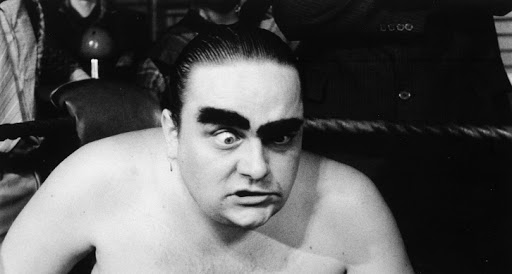Aki Kaurismäki is a Finnish film director, screenwriter, and producer. He was born in Orimattila, Finland, on April 4, 1957. He began his film career in the 1980s, directing a series of independent films that received critical acclaim.
Kaurismäki’s films are characterized by a unique cinematic style that combines irony, realism, and poetry. His films are often set in Finland and tell the stories of simple, unconventional characters who live on the margins of society.
Kaurismäki has received numerous awards for his work, including the Golden Lion for Lifetime Achievement at the Venice Film Festival in 2007.
Kaurismäki’s films are appreciated for their originality, humor, and sensitivity. His films are often characterized by a melancholic and poetic tone that reflects the director’s worldview.
Kaurismäki is a director who has left an indelible mark on Finnish and international cinema. His films are appreciated by audiences around the world and continue to be seen and discussed today.
Here are some of the strengths of Kaurismäki’s films:
- His stories are often touching and moving.
- His characters are often quirky and unique.
- His cinematic style is unique and recognizable.
If you enjoy independent cinema, then Aki Kaurismäki’s films are definitely worth seeing.
In particular, his most famous films are:
- Crime and Punishment (1983), an adaptation of the Dostoevsky novel, telling the story of a man who kills for money.
- Ariel (1988), a drama film telling the story of a young man living in post-industrial Finland.
- The Match Factory Girl (1990), a drama film telling the story of a young woman working in a match factory.
- Leningrad Cowboys Go America (1989), a musical comedy film telling the story of a Finnish band that decides to go to America.
- The Man Without a Past (2002), a drama film telling the story of a man who loses his memory and identity.
- The Other Side of Hope (2017), a drama film telling the story of a Syrian refugee who arrives in Finland.
These films are all characterized by Kaurismäki’s unique cinematic style, which is based on a combination of irony, realism, and poetry. His films are often touching and moving, and tell stories of simple, unconventional characters who live on the margins of society.
Private Life

Kaurismäki is a reserved man and does not like to talk about his private life. It is known that he is married to film producer Paula Oittinen and has two children.
Kaurismäki is a great music lover and has often collaborated with famous musicians, such as Einstürzende Neubauten and the Leningrad Cowboys.
Kaurismäki is a unique and original figure in the international cinema scene. His films are appreciated by audiences worldwide and continue to be seen and discussed today.
Style
Aki Kaurismäki is known for his minimalist style, often using still camera shots, plain storytelling, and characters left to deal with the consequences of their actions. His work often centers on Helsinki, with characters sometimes wanting to escape the city. He has been influenced by French, Japanese, and American directors, and his films have a humorous side similar to Jim Jarmusch’s. He has criticized digital cinematography but has since embraced it. His politics are shaped by his view of Finland’s treatment of the working class, and he has spoken out against Finland’s immigration policy and NATO membership.
Filmography
Crime and Punishment (1983)
A young man, Raskolnikov, murders an old pawnbroker to test his theory that some men are superior to others and have the right to commit crimes. However, his plan goes awry and he finds himself being hunted by the police and his own conscience. The film is an adaptation of Dostoyevsky’s novel and retains its dark and introspective atmosphere. However, Kaurismäki adds a touch of irony and surrealism that makes the film more accessible to modern audiences.
Calamari Union (1985)
Two young men, Jussi and Kari, are friends and colleagues at a squid factory. The two fall in love with the same woman, Irma, and their friendship begins to falter.The film is a wry and melancholic portrait of everyday life in Finland. Kaurismäki uses a series of cinematic techniques, such as close-ups and silences, to create an atmosphere of loneliness and alienation.
Shadows in Paradise (1986)
A group of Finnish workers are sent to Germany to work in a factory. The workers are faced with the harsh reality of immigrant life, but they find comfort in their friendship and culture. The film is a realistic and moving portrait of the immigrant experience. Kaurismäki uses a series of cinematic techniques, such as long shots and simple dialogue, to create an atmosphere of authenticity.
Hamlet Goes Business (1987)
Hamlet, a middle-aged man who works at a funeral home, learns that his father has been murdered. Hamlet decides to seek revenge, but his plan goes awry and he finds himself involved in a series of events that lead him to question his life. The film is a satirical comedy that stages the story of Hamlet in a modern setting. Kaurismäki uses a series of cinematic techniques, such as alternating editing and ironic dialogue, to create an atmosphere of amusement and reflection.
Ariel (1988)
Ariel is a young man who lives in a post-industrial Finland. Ariel is a dreamer and an idealist, but the reality of everyday life brings him to confront his disillusionment. The film is a melancholic and poetic portrait of youth. Kaurismäki uses a series of cinematic techniques, such as close-ups and silences, to create an atmosphere of loneliness and nostalgia.
Leningrad Cowboys Go America (1989)
A Finnish band, the Leningrad Cowboys, decides to go to America to seek fame and fortune. However, the Cowboys find themselves faced with the harsh reality of life as musicians in America, but they do not give up and continue to pursue their dream. The film is a musical comedy that combines elements of surrealism and parody. Kaurismäki uses a series of cinematic techniques, such as bright colors and ironic dialogue, to create an atmosphere of fun and fantasy.
The Match Factory Girl (1990)
Tarja is a young woman who works in a match factory. Tarja is a simple and naive person, but she has a kind and compassionate heart. The film is a poetic and moving portrait of the life of a young woman. Kaurismäki uses a series of cinematic techniques, such as close-ups and silences, to create an atmosphere of melancholy and hope.
I Hired a Contract Killer (1990)
Jussi is a middle-aged man who lives in a post-industrial Finland. Jussi is a lonely and depressed man, and he decides to hire a hitman to kill himself. The film is a black comedy that explores the theme of loneliness and depression.
Bohemian Life (1992)
The story of four artist friends living in Helsinki at the end of the 19th century. The four are named Mimi, Rodolfo, Marcello, and Schaunard, and they struggle between love, art, and poverty. The film is an adaptation of Puccini’s opera and retains its poetic and romantic atmosphere. Kaurismäki, however, adds a touch of irony and realism that makes the film more accessible to modern audiences.
Tatjana (1994)
A Finnish man falls in love with a Russian woman who works in a bar. The two fall in love and decide to get married, but their relationship is hindered by the Cold War. The film is a romantic comedy that combines elements of realism and surrealism. Kaurismäki uses a series of cinematic techniques, such as close-ups and silences, to create an atmosphere of melancholy and hope.
Leningrad Cowboys Meet Moses (1994)
The Finnish rock band Leningrad Cowboys decide to go on a journey to America to meet Moses. The Cowboys find themselves having to face the harsh reality of American life, but they do not give up and continue to pursue their dream. The film is a musical comedy that combines elements of surrealism and parody. Kaurismäki uses a series of cinematic techniques, such as bright colors and ironic dialogue, to create an atmosphere of fun and fantasy.
Distant Clouds (1996)
The story of two brothers living in a small Finnish town. The two brothers find themselves having to face the death of their father and the abandonment of their mother. The film is a realistic drama that explores the theme of loss and loneliness. Kaurismäki uses a series of cinematic techniques, such as long shots and silences, to create an atmosphere of melancholy and nostalgia.
Juha (1999)
The story of a man who returns home after many years of absence. The man finds his family, but he must confront the past and his choices. The film is a psychological drama that explores the theme of sin and redemption. Kaurismäki uses a series of cinematic techniques, such as close-ups and silences, to create an atmosphere of suspense and unease.
The Man Without a Past (2002)
A man with no name wakes up in a hospital with no memory of his life. The man finds himself having to rebuild his identity and his past. The film is a neo-noir that explores the theme of memory and loss. Kaurismäki uses a series of cinematic techniques, such as close-ups and silences, to create an atmosphere of mystery and suspense.
Lights in the Dusk (2006)
The story of a group of people living on the margins of society. The characters are all different, but they are united by their loneliness and their desire for redemption. The film is a social drama that explores the theme of marginality and hope. Kaurismäki uses a series of cinematic techniques, such as close-ups and silences, to create an atmosphere of melancholy and compassion.
Le Havre (2011)
An elderly carpenter in Le Havre finds an African boy who has escaped from a refugee camp. The man decides to help the boy find his family. The film is a tragicomedy that explores the theme of solidarity and compassion. Kaurismäki uses a series of cinematic techniques, such as close-ups and silences, to create an atmosphere of hope and optimism.
The Other Side of Hope (2017)
A Finnish traveling salesman meets a Syrian refugee in Helsinki. The two men help each other and develop a friendship. The film is a social drama that explores the theme of solidarity and compassion. Kaurismäki uses a series of cinematic techniques, such as close-ups and silences, to create an atmosphere of hope and optimism.
Fallen Leaves (2023)
An elderly man lives alone in a small house in Finland. The man is awaiting death and reflects on his life. The film is a philosophical drama that explores the theme of life and death. Kaurismäki uses a series of cinematic techniques, such as close-ups and silences
Kaurismaki and his Cinematic Poetics
There are those who discovered the movies of Aki Kaurismäki relatively recently. Perhaps with the very remarkable Miracle in Le Havre (2011) or with The other face of hope (2017). And that would already be fine, in a world that the magic of the big screen is gradually replacing the assembly line of television series.
But the writer is among those who were waiting for the Finnish genius Kaurismäki at the gate already when, in the mid-90s, he showed up at the Palazzo delle Esposizioni in Rome, to accompany a full-bodied retrospective of his works.
On the Italian screens, however, certain jewels he directed had passed like meteors, see the enchanting and melancholy Vita da bohème (1992).
But although his bewildered humor could be glimpsed there too, perhaps the peaks of insanity, madness and irreverence sometimes reached by the Kaurismäki were not so well known.
Well, the tasty Capitoline appointment also served to become familiar with these aspects, present both in his personality and in the most eccentric results of that filmography, so out of the box as to appear unique, inimitable.
Let’s start with the man. Suffice it to say that at the highly anticipated meeting with the public Aki Kaurismäki did not want to start speaking, remaining silent in the face of the first questions, until several bottles of beer had been distributed among the speakers.
At first the organizers thought he was joking. But he continued to keep quiet.
And then those who hosted him had to resign themselves to ordering a lot of Peroni bottled at the museum bar, including the one that the undersigned, with a cheek that was immediately appreciated, managed to grab and get autographed on the label … Almost unique relic, in the panorama of autographs granted at festivals.
In short, there would seem to be a rush of healthy madness that from the Kaurismäki spreads slyly, spreading in the surrounding air as well as in his cinematic stories, in his surreal inventiveness, in his most absurd, stylized, improbable characters.
And this was even more evident at the beginning, when the refined black and white of a feature film like Calamari Union (1985) lent itself, for example, to host a noir fatally ethereal and bizarre.
Enough to deploy at the starting blocks 15 unscrewed, linked together by a delusional plan, fourteen of which have the name Frank and only one Pekka. Nobody worries, everything under control: the rest of the plot will in fact be no less crazy than the premises.

Kaurismaki’s Short Films
Yet, it is in the shorts that Kaurismäki’s extravagances are at their best, blending that eccentric and naive vein with a rebellious instinct. With the emergence of a frozen humor and with a musicality with sinuous, elegant features, albeit anchored to the picturesque estates. And the light-hearted rock of the Leningrad Cowboys . Rebellious tufts. Toe shoes.
Clothing and iconographic references mockingly halfway between Soviet mythology and the 1950s United States. The original Finnish band, muse of picaresque and zany films like the absolute cult Leningrad Cowboys Go America (1989) and the less fortunate sequel Leningrad Cowboys Meet Moses (1994), has also animated a fair supply of shorts and video clips, truly devilish sarabande, in able to slip with swashbuckling euphoria from the poignant ballad to daring reinterpretations of rock’n’roll classics.
And if Thru the Wire (1987) paraphrased the stereotypes of old Hollywood with class, Those Were the Days (1992) made fun of the charm of Paris and These Boots (1992) proposed a bizarre, colorful, irresistible counter-history of Finland in music, the most unforgettable of the stilettate had arrived at the very beginning of the imaginative tour: in 1986, to be precise, with Rocky VI . Or how to make the myth created by Sylvester Stallone creak with red stars, balalaike, sledges in the tundra and heavy punches!
Punches suffered in bursts and without an adequate reaction, to tell the truth, by the too thin American boxer. Until the much-desired catastrophe with stars and stripes. Evidently in Aki Kaurismäki the defeat suffered just a year earlier by the legendary Ivan Drago had not really gone down.
How could a Yankee grown up on burgers and coke overwhelm the energetic son of the steppe, who emerged powerfully in the shadow of the Kremlin? Heresy!
And to put things right he invented, with the complicity of the aforementioned Leningrad Cowboys, this crazy and stalwart parody, whose dry black and white drags the viewer into a stylized boxing revenge, which smacks of mockery from first to last framing. But with indisputable directorial skill, amplified by the overwhelming soundtrack and a very easy editing, both during the preparation of the match and in the grotesque scenes shot in the ring.
Rocky VI you can find it easily on Youtube and, whether you love Stallone or not, you cannot help but indulge in a grin, in the face of the tragicomic outcome of the challenge launched to his alter ego by the extremely effective, even if very crude, Soviet champion.
Stefano Coccia






